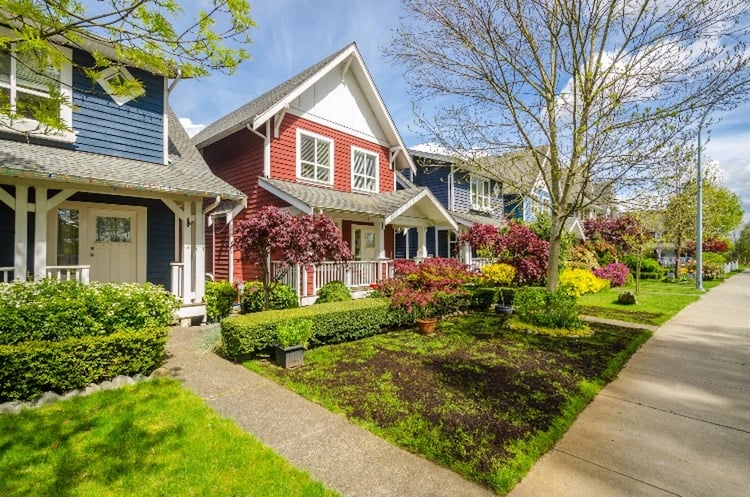Having $100K is a nice little nest egg, but 6 figures doesn’t go nearly as far as it used to; ask any financial advisor.
While still affordable interest rates and rapidly rising inflation are boons to some investments, the value of your cash can be quickly eroded if you deposit the money and leave it in a savings account, even if it’s a high-yield savings account.
Here are 8 suggestions of what to do with $100K today, including ideas to generate a little extra income while helping to keep your principal intact.
Key takeaways
- Rising inflation and low interest rates limit the options for investing $100K, especially for investors who want to generate income while reducing investment risk.
- Investing in real estate offers the opportunity for potentially solid returns, low volatility compared to the overall stock market, portfolio diversification, recurring rental income, and an increase in equity if the property appreciates.
- There are a variety of ways to invest $100K in real estate, including purchasing single-family rentals (SFRs), flipping your primary residence, or joining a real estate investing group.
1. Purchase SFR property
A growing number of private individuals and institutional investors are putting their money into SFR property. When you look at the recent numbers, it’s easy to understand why.
According to the most recent Single-Family Rental Investment Snapshot from Arbor (Q4 2021), the SFR asset class enjoyed its best year on record in 2021. Occupancy rates across all SFRs averaged nearly 95%, while rent growth for vacant-to-occupied property sat at 13.5%.
SFRs can be easy to find across the country and are generally easy to manage. There are various loan programs available that allow you to use leverage and control 100% of the property and income by making a down payment of around 20%.
Arbor also notes that demographic trends and pandemic-related forces, such as more people moving to the suburbs and smaller cities and working from home, are growing forces behind the increasing demand for SFRs.
2. Invest in a short-term vacation rental
More people working from anywhere is also increasing the demand for short-term vacation rental property. AirDNA, a company specializing in short-term rental (STR) analytics, reports that 16.5 million nights were booked in February 2022 alone, increasing 21% year over year.
In addition to growing demand, gross rental income is another benefit of investing in short-term vacation rental property. Average daily rates (ADRs) are $273, trending 15.4% higher than last year, with strong demand for STRs seen in both urban and suburban markets.
AirDNA expects to see significantly more investment in STRs this year because most hosts continue to experience record levels of occupancy and revenues. However, while gross rental income from STRs is greater compared to long-term rentals, operating expenses are also higher due to increased tenant turnover and ownership expenses.
A good resource for learning more about annual returns from STR property is the Roofstock Marketplace. There are STRs listed for sale in vacation rental hot spots like Sarasota and Orlando, Florida, and Charleston, South Carolina.
3. Hack your home
House hacking is a popular strategy for investing in real estate by renting out part of your primary residence. Because the home is your primary residence, you may qualify for more favorable financing terms and a slightly lower interest rate, along with a lower down payment.
Some investors rent out a spare bedroom to generate extra income, while others convert an attic or basement into a small apartment. In some cases, the rental income for house hacking may be enough to pay for your monthly mortgage payment and other expenses like utilities and property taxes.
Another way to hack your home is by purchasing a small multifamily property with 2 to 4 units. As long as you live in one of the units, lenders view the entire property as your primary residence, even though you’re generating extra income by renting out the other units to tenants.
4. Flip your primary residence
Some investors make use of the favorable loan terms and lower interest rates of financing a primary residence by living in the home for a couple of years, then selling and taking advantage of the capital gains tax exclusion.
As IRS Topic No. 701 explains, taxpayers who live in a home for at least 2 out of 5 years prior to the sale date may exclude a max of $250,000 of that gain from income or $500,000 if filing a joint tax return. Investors buying a fixer-upper may qualify for an Federal Housing Administration 203(k) rehab loan to finance the property purchase and the cost of repairs and modernization.
One of the drawbacks to this real estate investing strategy is that you’ll need to move every couple of years, but that hassle might well be worth the returns for some people. Of course, you could also keep the home and turn it into a rental property.
5. Buy, renovate, rent, refinance, repeat
The buy, renovate, rent, refinance, repeat (BRRRR) real estate investing strategy is similar to rinse, wash, and repeat, where you do the same thing over and over again, along with a little fine-tuning along the way.
For BRRRR to work, you’ll need to find an affordable home, renovate and upgrade to increase your fair market value and equity, rent to a qualified tenant, and save the net cash flow. Then, when there’s enough equity in the home, pull money out by performing a cash-out refinance and use the money for a down payment on another rental property.
An easy way to keep track of owner’s equity is by using the real estate balance feature on Stessa, a Roofstock company. Property values and mortgage balances are updated in real time, making it easy to tell when your equity position is large enough to qualify for a cash-out refi.
6. Fix and flip
Fixing and flipping is a variation of the BRRRR strategy, except, once repairs are done, the home is sold to another investor or home buyer rather than renting to a qualified tenant.
This investing strategy could offer high rewards; it requires a relatively high level of risk tolerance and large sums of money for the down payment and any necessary upgrades and repairs. You’ve got to find a motivated seller with a home in need of repairs and put together a deal where the acquisition price plus the cost of repairs is less than the fair market value.
There’s always the risk that market conditions could change while repairs are being made or you could underestimate the amount of work the home needs, both of which could result in a money-losing fix-and-flip project, so it’s not a low-risk investment.
7. Join a real estate investing group
Real estate investing groups (REIGs) are an option for investing your $100K in different opportunities by pooling money with other investors. REIGs work similarly to crowdfunds or real estate investment trusts (REITs) but on a smaller, more personal level.
Some of the potential benefits of joining an REIG are that you can diversify your $100K by investing capital in different deals and types of transactions, minimize your downside risk compared to putting all of your money in a single investment, and network with other investors.
Before joining an REIG, ask about membership fees, ensure that the group’s investment strategy and desired risk level match yours, and ask about the historical returns the REIG has generated from past investments.
8. Indirectly invest in real estate
You could also use part of your $100K to invest in real estate indirectly by purchasing shares of a privately held real estate investment trust or REIT like Roofstock One, which is an unregistered security available to accredited investors. Or you could invest in a publicly traded REIT or real estate crowdfund.
Publicly traded REIT shares are highly liquid because they can be bought and sold online like any other stock and are a good option for diversifying your investment into different real estate asset classes. By law, all REITs are required to distribute at least 90% of their annual net income to shareholders, so they can be a good source of dividend income, provided the REIT is profitable.
Crowdfunding platforms let investors participate in large projects, such as new home developments or commercial real estate, by pooling money with other investors. Money invested in a crowdfund may need to be tied up for an extended period of time, and often the most attractive opportunities are reserved for accredited investors.
Why invest in real estate?
Investing in real estate can offer a more diversified portfolio, generate recurring rental income, generate profits if property appreciates over the long term, and harvest unique tax benefits.
In many cases, the monthly rent collected from a tenant is sufficient to pay for normal operating expenses and the monthly mortgage payment while still having a little money left over at the end of the year.
In fact, it’s hard to think of another investment where you can use someone else’s money to pursue financial goals and build long-term wealth.










